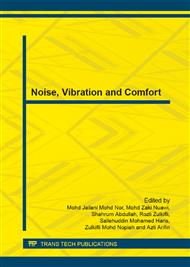p.107
p.113
p.119
p.125
p.130
p.138
p.143
p.151
p.156
Unattended Noise Monitoring: How to Fulfill IEC 61672 Sound Level Meter Standard for 0 Degree and 90 Degree Reference Directions with the Same Device
Abstract:
Unattended noise measurements are more and more common for noise assessment in the environment. Multiple sources are usually measured with a random position with respect to the measurement point. Noise generated by ground transportation, leisure activities, construction sites is coming from all directions, although mainly the horizontal direction. Placed vertically and configured for a reference direction of 90° from its axis, the goal is to meet the requirements of the IEC 61672 standard on sound level meters taking into account noise incidence from the horizontal direction. The main technical difficulty is the criterion for the maximum level difference allowed between two random incidence angles (directivity). The objective can be fulfilled using a cone-shaped device on top of the microphone. When measuring attended noise with the instrument in hand, the sound level meter must be pointed at the source according to standard IEC 60651. The purpose of the paper is to describe the different research & development phases to fulfill IEC 61672 sound level meter standard for 0° and 90° reference directions with the same device.
Info:
Periodical:
Pages:
130-137
Citation:
Online since:
December 2013
Authors:
Price:
Сopyright:
© 2014 Trans Tech Publications Ltd. All Rights Reserved
Share:
Citation:


